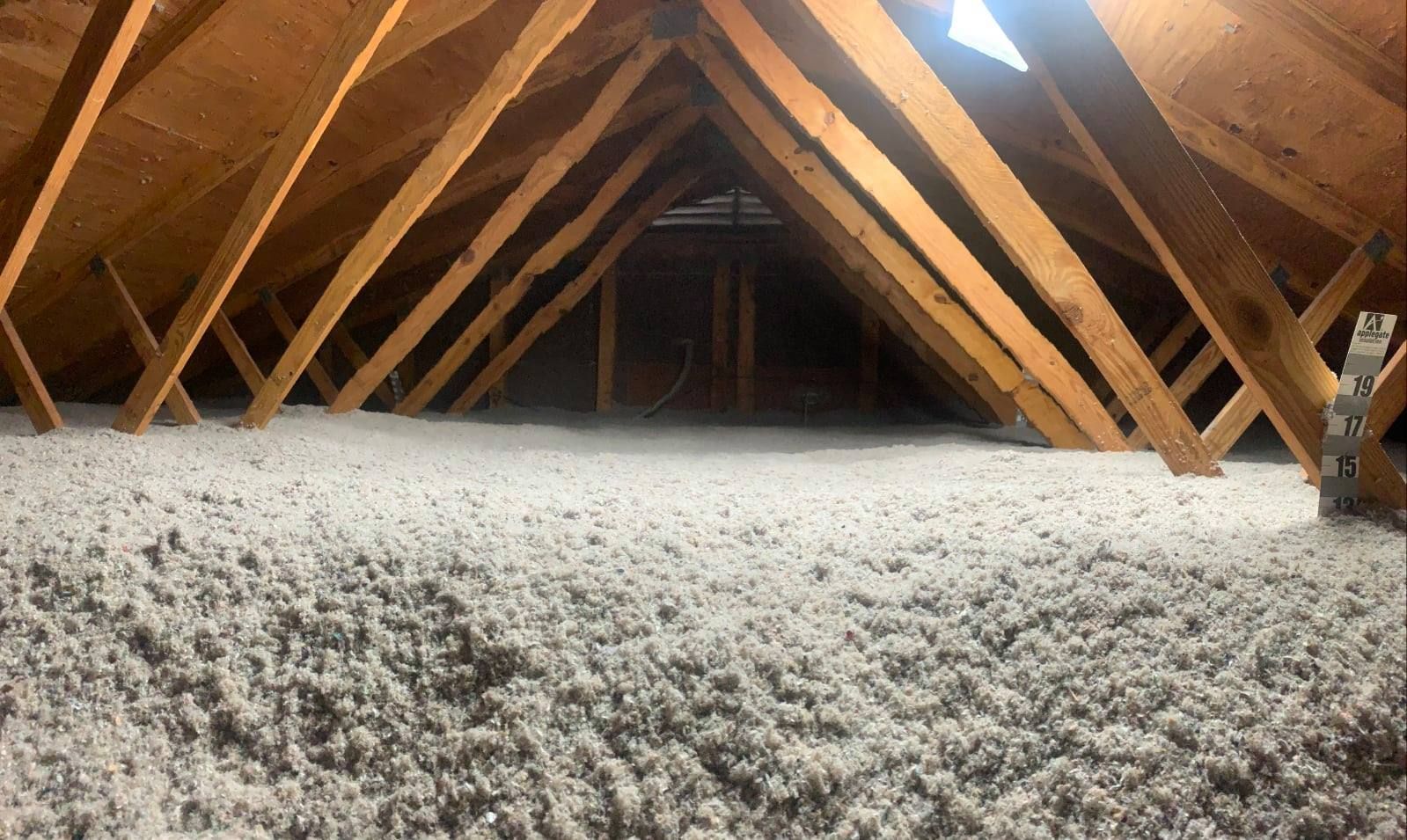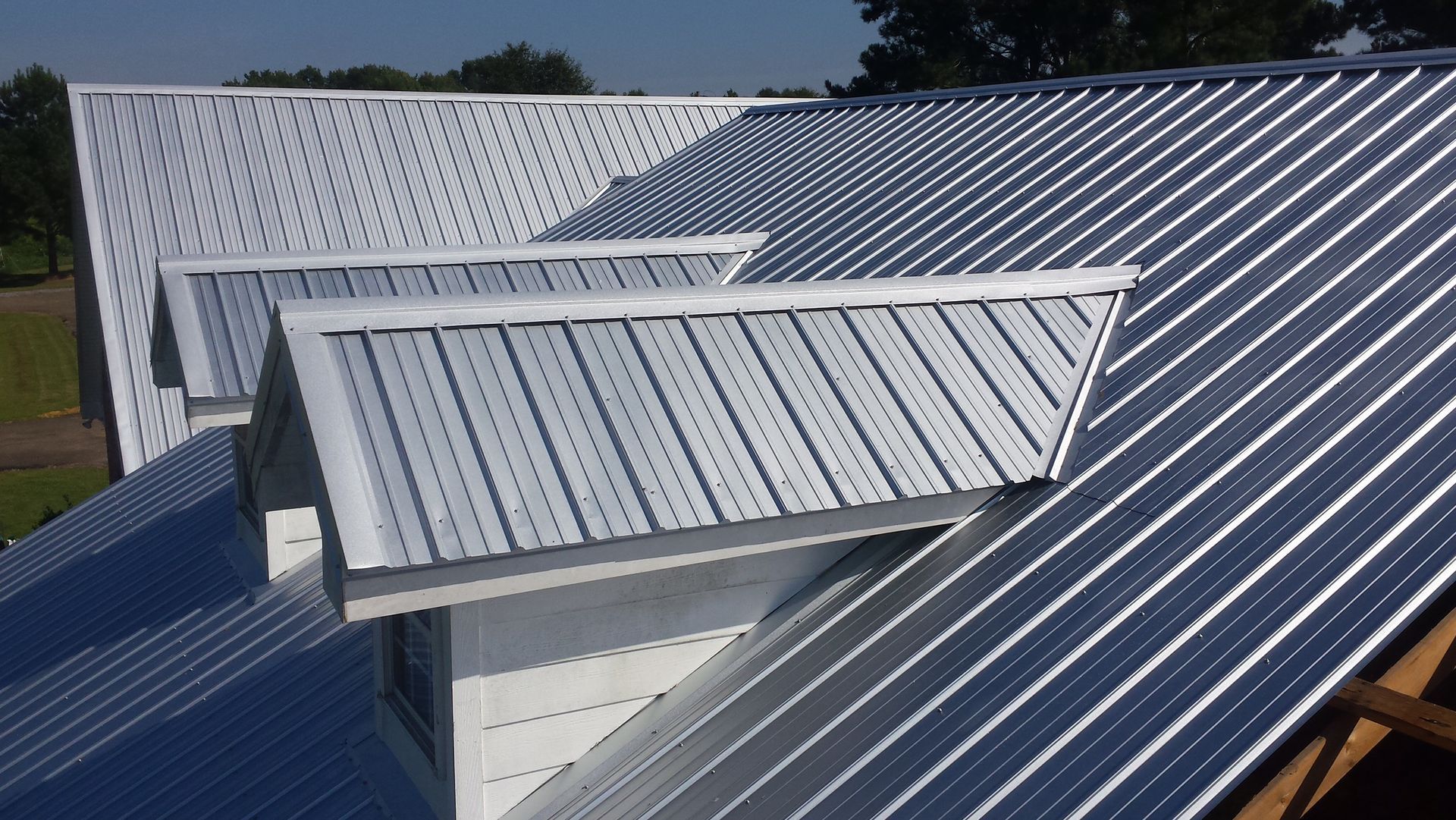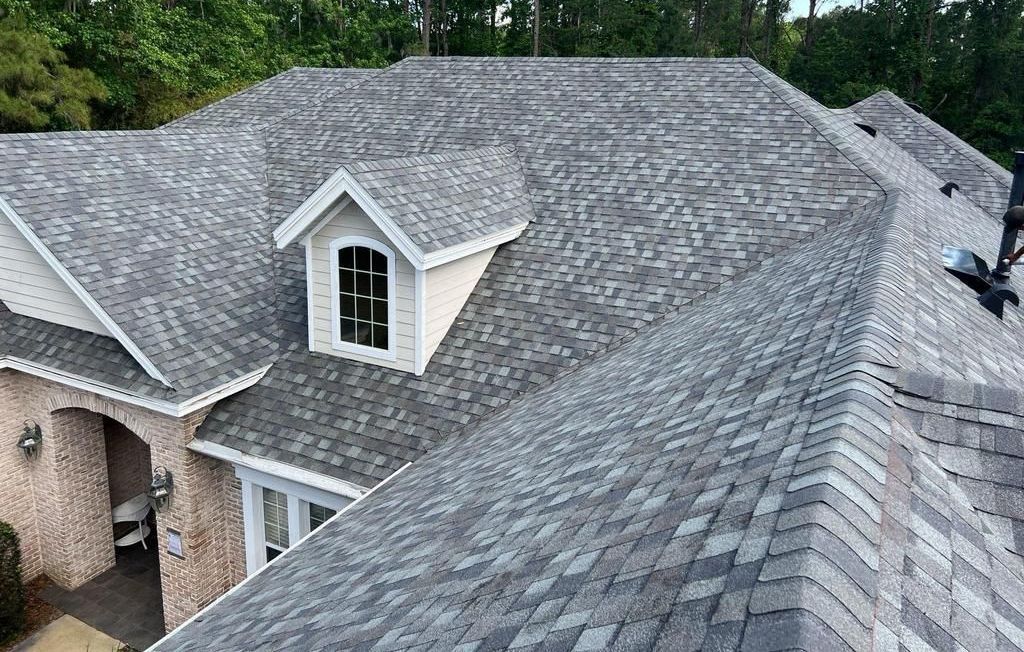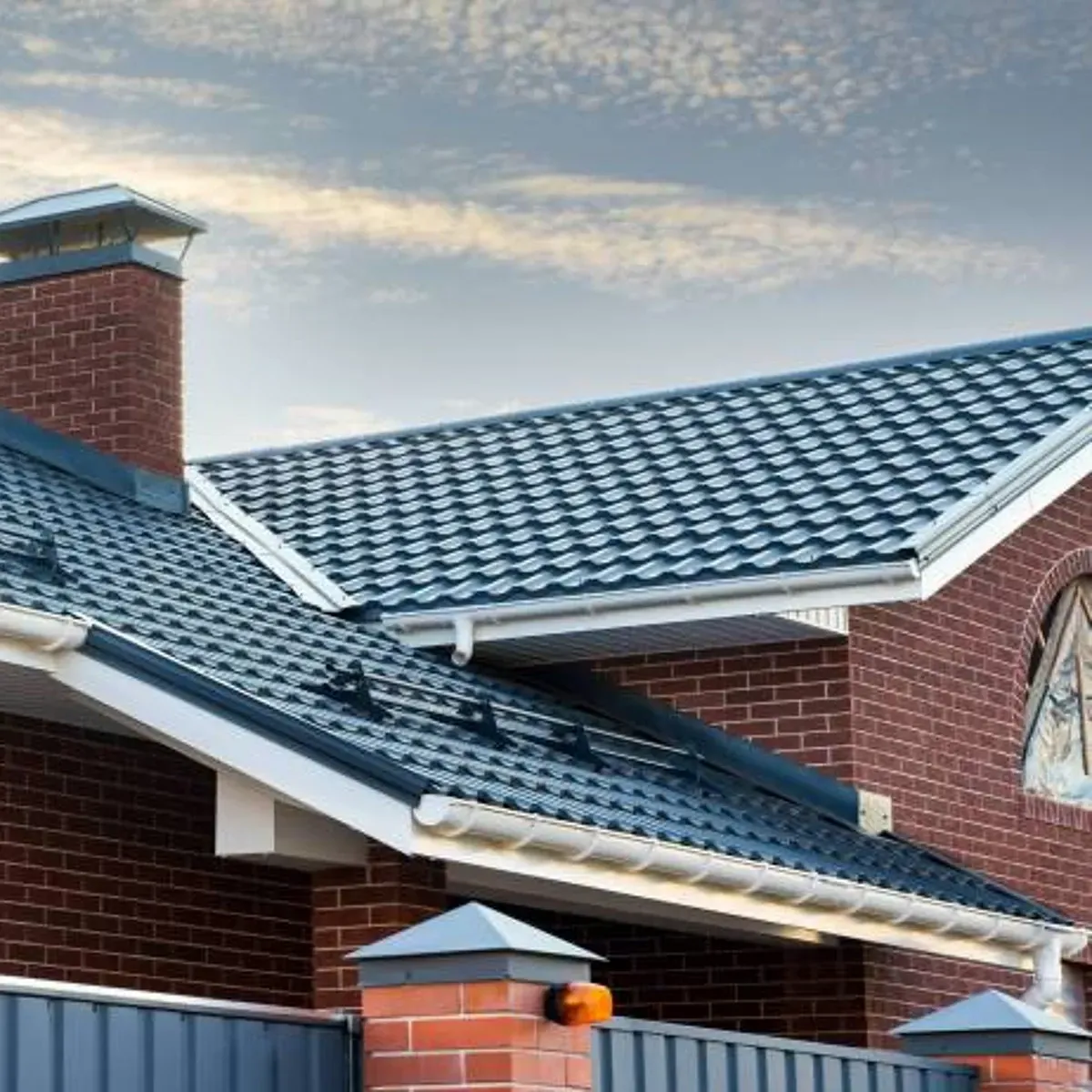Your roof plays a big role in your home's energy use. It can affect how much you pay for heating and cooling. A good roof keeps your house comfy and saves you money.
Some roof problems can make your bills go up. These include leaks, missing shingles, and poor insulation. Fixing these issues can lower your energy costs. A well-maintained roof helps keep warm air in during winter and cool air in during summer.
The color of your roof matters too. Light colors reflect more sun and can help keep your house cooler. This is very helpful in hot places. Dark roofs absorb more heat, which can raise your cooling costs. Picking the right roof color for your climate can make a big difference.

Fundamentals of Roofing Insulation
Roofing insulation plays a key role in your home's energy efficiency. It helps keep your indoor temperature stable and can lower your energy bills.
Types of Roofing Insulation
You can choose from several types of roofing insulation. Each has its own benefits:
- Fiberglass: This is a common and cost-effective option. It comes in batts or rolls and is easy to install.
- Cellulose: Made from recycled paper products, cellulose is eco-friendly. It can be blown into hard-to-reach spaces.
- Spray foam: This type expands to fill gaps and cracks. It provides excellent air sealing along with insulation.
- Rigid foam boards: These are highly effective but more expensive. They work well in flat or low-slope roofs.
Your choice depends on your roof type, climate, and budget. Proper installation is crucial for any insulation to work effectively.
Benefits of Proper Insulation
Good roof insulation offers many advantages:
- Lower energy bills: It reduces heat loss in winter and heat gain in summer. This means your heating and cooling systems work less.
- Improved comfort: You'll notice more stable indoor temperatures. No more cold spots or overheated rooms.
- Moisture control: Quality insulation helps prevent condensation and mold growth.
- Extended roof life: By reducing temperature fluctuations, insulation can help your roof last longer.
- Environmental impact: Less energy use means a smaller carbon footprint for your home.
Remember, the effectiveness of your insulation depends on proper installation and maintenance. Regular checks can help ensure it continues to perform well over time.

Roofing Materials and Energy Efficiency
Your roof's material can greatly affect your home's energy use. The right choice can lower your bills and make your house more comfortable.
Reflective Roofing Solutions
Reflective roofing materials can help keep your home cool. These materials bounce sunlight away from your house. This reduces heat buildup in your attic and upper floors.
Metal roofs with light colors work well for this. They reflect up to 70% of the sun's rays. This can cut your cooling costs by up to 25%.
Cool roof coatings are another option. You can apply these to existing roofs. They add a layer that reflects more sunlight. This can make even dark roofs more energy-efficient.
Choosing reflective materials is smart in hot climates. It can make a big difference in your summer energy bills.
Thermal Mass in Roofing Materials
Some roofing materials can store heat. This is called thermal mass. It can help keep your home's temperature steady.
Clay and concrete tiles have high thermal mass. They absorb heat during the day. At night, they release this heat slowly. This can help keep your home warmer in winter.
In summer, thermal mass can delay heat transfer. Your home stays cooler during the day. The stored heat releases at night when it's cooler outside.
Slate is another material with good thermal mass. It's durable and can last for decades. This makes it a good long-term choice for energy efficiency.
Using materials with thermal mass can reduce your heating and cooling needs. This leads to lower energy bills year-round.

Roof Design and Structural Considerations
Your roof's design and structure play a big role in your home's energy use. The shape, slope, and orientation of your roof can affect how much heat it absorbs or reflects.
Roof Shape and Energy Consumption
The shape of your roof impacts how efficiently it manages heat. A steep pitch allows snow to slide off easily, which reduces weight and potential damage. Gabled roofs with good ventilation can help keep your attic cool in summer.
Flat roofs often trap heat, making your home warmer. But they're great for installing solar panels or green roofs. Hip roofs are good at shedding water and snow. They also stand up well to strong winds.
The material you choose for your roof matters too. Light-colored or reflective materials can bounce back more of the sun's heat. This helps keep your home cooler in hot weather.
Orientation and Slope Impact
How your roof faces the sun affects your energy use. In most places, a south-facing roof gets the most sun. This is ideal if you want to use solar panels.
The slope of your roof also matters. A steeper slope on the south side can capture more winter sun. This helps warm your home when it's cold out. A gentler slope on the north side reduces heat gain in summer.
Proper insulation and ventilation work with your roof's design to save energy. Good airflow in your attic prevents heat buildup. This cuts down on cooling costs in summer.
Your roof's overhang can also help. A longer overhang on the south side blocks high summer sun. But it lets in low winter sun to warm your home.
Impact of Climate on Roofing Choices
Climate plays a big role in picking the right roof for your home. Different weather conditions call for different roofing materials and designs to keep your house safe and comfy.
Adapting Roofing to Cold Climates
In cold areas, you need a roof that can handle snow and ice. Metal roofing is highly durable and can stand up to harsh winter weather. It sheds snow easily, which helps prevent ice dams.
Asphalt shingles with a high rating are also good for cold climates. They resist cracking in freezing temps. Make sure your roof has good insulation and ventilation to stop ice dams.
For areas with lots of snow, steep roof slopes work best. They let snow slide off more easily. This cuts down on the weight your roof has to hold.
Roofing for Hot and Sunny Areas
In hot climates, your main goal is to keep your house cool. Cool roofing materials can reflect heat and lower your energy bills.
Light-colored or white roofs bounce back more sunlight. This helps keep your attic and home cooler. Clay or concrete tiles are great for hot areas. They let air flow under them, which cools your roof.
Metal roofs with special coatings can reflect up to 90% of the sun's heat. This makes them a top choice for sunny spots. Green roofs covered in plants can also help cool your home.
Don't forget about proper ventilation. It stops heat from building up in your attic. This makes your whole house more comfy and saves energy.

Maintenance and Energy Cost Saving
Keeping your roof in good shape can lead to big savings on your energy bills. Regular upkeep and smart repair choices make a big difference.
Regular Roof Inspections
You should check your roof twice a year. Look for missing shingles, cracks, or other damage. These issues can let heat escape, making your heating system work harder.
Don't forget to look inside too. Check your attic for wet spots or mold. These are signs that your roof might be leaking.
Cleaning gutters is also key. Clogged gutters can cause water to back up under your shingles. This can lead to roof damage and higher energy costs.
Repair and Replacement Strategies
Fix small problems fast to avoid bigger, costlier issues later. Replace missing shingles right away. Seal any cracks or holes you find.
If your roof is old, think about replacing it. New roofs are often more energy-efficient. They can cut your energy bills by 10% to 30%.
Choose light-colored roofing materials. They reflect more sunlight and keep your home cooler. This means less work for your air conditioner.
Consider adding insulation when you repair or replace your roof. Good insulation can greatly reduce heat loss through your roof.
Conclusion
Your roof plays a big role in your home's energy use. A good roof can help you save money on bills. It keeps your house cooler in summer and warmer in winter.
Picking the right roof color affects temperature inside your home. Light colors reflect heat, while dark colors absorb it. Choose based on your local climate.
Good insulation is key. It stops heat from escaping in winter and entering in summer. This helps your heating and cooling systems work less.
Regular roof checks are important. Fix any damage quickly to keep your roof working well.
For expert help with your roof in Providence, RI, turn to Providence Roofing Company. We can assess your roof and suggest ways to improve its energy efficiency. Our team knows how to make your roof work better for you.
By taking care of your roof, you can lower your energy use. This saves you money and helps the environment too. It's a smart choice for any homeowner.


